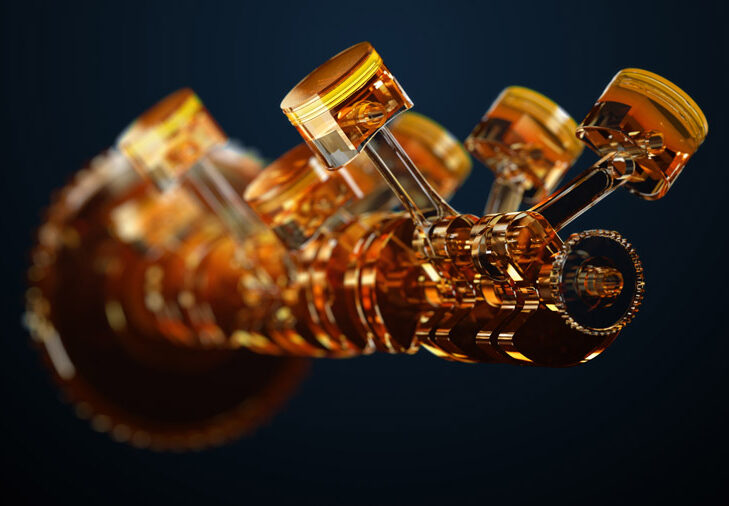
‘Problematic’ tests pull handbrake on grease specifications
The National Lubricating Grease Institute (NLGI) “Grade” or “Consistency Number” is a function of how much thickener is used in the grease formulation. The more thickener employed, the stiffer the grease. NLGI’s classification defines nine grades, from a triple zero that is fluid, even at low temperatures, to a “very hard” grade six.
NLGI grades are a widely used classification. Wouldn’t it be convenient if it were the only information required to determine the optimal grease variety? However, many other properties influence the suitability of grease for specific applications and therefore require testing. Here’s where the complexity comes in.
The NLGI Grade complements other grease classifications such as ASTM D4950, Standard Classification and Specification for Automotive Service greases, which has been adopted in more than 100 countries. Still, there are innumerable tests for measuring grease properties that are not part of ASTM, including DIN methods from the German Institute for Standardization, International Organization for Standardization (ISO) methods, AFNOR in France, as well as Swedish and Chinese methods. There is a lot of overlap and seemingly no move to consolidate.
ASTM D4950 was first published in 1989 by ASTM International to standardise the process and make it easier for consumers at a time when nothing effectively measured the performance of automobile greases and OEM specifications didn’t always agree with one another. D4950 categorizes greases suitable for the lubrication of chassis components and wheel bearings of vehicles based on performance requirements. ASTM Committee D02 on Petroleum Products, Liquid Fuels, and Lubricants provides the technical direction for the program.

The grease market has long been dominated by lithium greases which continue to account for “about 75%” of all grease manufactured throughout the world, according to Dave Turner, product specialist with the Lubricants Fluid Technology Group of CITGO Petroleum Corp. As simple lithium soap grease usage contracted a bit — driven by the need for higher performance, higher temperature greases — lithium complex production started to rise. In the past, lithium supply has been plentiful and relatively inexpensive.
Based in Houston, Texas, U.S.A., Turner has been involved in the grease industry for more than 30 years since graduating from Lamar University in Beaumont, Texas, and assesses the grease market as “fairly slow to change.”
Though, with global demand for lithium skyrocketing, Turner suggests companies are now considering lithium replacements such as the high-temperature thickener replacement polyurea and the “up and coming” thickener calcium sulphonate. Calcium sulphonate was introduced in the 1980s but is still considered the “new kid on the block,” says Turner. Perhaps this is indicative of the speed of change within the industry.
A qualified chemical engineer and chairman of ASTM Subcommittee D02.G0 on Lubricating Grease, Turner spent 17 years at Texaco (which is now part of Chevron), and a further 16 years at Shell before joining CITGO. What is clear is the need for change to existing grease specifications, he says. A “number of problematic tests require attention,” he adds. Fellow ASTM member Gareth Fish from Lubrizol is heading a task group in NLGI on automotive service greases to address problematic specifications, he adds.
Developed in the mid-1960s, ASTM D2265 ‘dropping point test’ measures the temperature capability of grease by gauging the point at which the grease transitions from a semi-solid to a liquid state. Controversy surrounds the importance of measuring dropping point, particularly for higher temperature greases which do not have a defined dropping point.
A central issue with D2265 is the use of mercury in glass thermometers, which the United States Environmental Protection Agency (EPA) is trying to ban and are already prohibited in the state of California. With the dynamic nature of the tests, it is challenging to find a non-mercury in glass temperature measuring device that responds similarly to the thermometers specified in the standards.
Potential electronic alternatives could be cost prohibitive for businesses with multiple dropping point rigs or locations. Turner estimates the cost upwards of USD4,000, compared to a USD75 mercury device. Galinstan, a liquid metal that is less hazardous than mercury holds potential for use in this test method, though it remains a work in progress.
ASTM D566 is a “very old” dropping point test method that the ASTM D02 subcommittee “would like to see go away,” says Turner. The test still appears in some specifications, in particular, some United States Military specifications.
The biggest problem is ASTM D3527. This high temperature, tapered roller bearing life test is colloquially referred to as the “wheel bearing life test” and is based on a wheel bearing hub design from the 1970’s. The design of wheel bearings used in today’s automobiles and light-duty vehicles has changed. Unfortunately, the test has not. Additionally, the test has poor precision. Other D3527 issues include a lack of updated motor specification in the test method to match what is available as a modern electric motor, variability in bearings, and heating and cooling characteristics in different vintages of test rigs produced over the years.
Compounding the difficulty for those involved in specification development, historic support from OEM delegates at meetings has dried up in recent times. A lack of direct input from OEMs “makes test method development more difficult,” Turner says.
Irrespective of the problems with D3527, the committee recently voted to reapprove it for a further five years, though a task group has been appointed to begin development of a new bearing life test using modern bearings with flexibility built in for different bearing designs. Realistically, Turner says, they are looking at a 10-year effort to replace this test, though he hopes to have a test rig to evaluate within 12 months. The wheel bearing leakage test, which measures how well grease stays in the bearing, uses the same test rig as D3527, a further consideration in designing a replacement rig for D3527.

Oscillating fretting wear test D4170 is “kind of in transition,” Turner adds. The method has precision issues, though there is a newer method available that employs an SRV (Schwingung, Reibung und Verschleiss) machine to measure that property. The test remains ‘problematic’ owing to a low rate of adoption of the new SRV machines.
A “relatively simple” update awaits the ASTM D4289 elastomer compatibility test method. The test currently uses aerospace elastomers, originally chosen because they were readily available and highly controlled; however, they are not representative of the auto industry.
Every auto company needs a grease to successfully pass ASTM D4693 low-temperature torque in a tapered roller bearings test. If the grease is too stiff, the automobile won’t roll. Turner says there are concerns over whether low temperature torque is really a good indicator of low temperature performance.
In future, Turner theorises a potential need to set up an R&D centre in partnership with equipment manufacturers to develop test rigs to measure grease properties using modern test methods.







